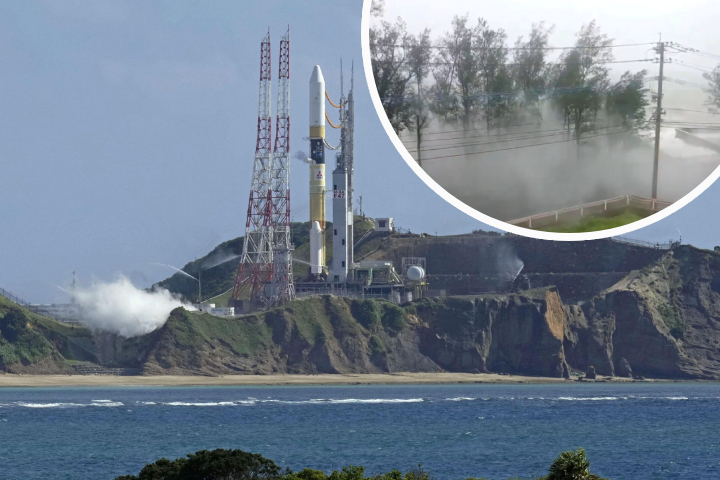


TOKYO—Japan's space agency canceled a scheduled launch of a rocket carrying what would be the country's first spacecraft to land on the moon on Monday, citing strong winds as the reason.
Although the H-IIA rocket, Japan's premier launch vehicle, has a 98 percent launch success rate, inadequate upper-atmosphere wind conditions prompted a suspension 27 minutes before the scheduled liftoff.
“High-altitude winds hit our constraint for a launch … which had been set to ensure no impact from debris falling outside of pre-warned areas,” said MHI H-IIA launch unit chief Tatsuru Tokunaga.
Strong gusts of about 108 kph (67 mph) were reported at a height of 5,000-15,000 meters (16400-49200 feet), according to Michio Kawakami, safety manager of Japan Aerospace Exploration Agency (JAXA). He stated that many typhoons in Japan might have influenced the wind conditions.
The new launch date has not been determined, but will be no earlier than Thursday due to essential activities such as refueling, according to Mr. Tokunaga. According to MHI and JAXA, the launch might happen as late as September 15.
The rocket was scheduled to launch from JAXA's Tanegashima Space Center in southern Japan on Monday morning, but it had already been postponed twice due to inclement weather since last week. It will be the 47th H-IIA launched by Japan.
The rocket carries JAXA's Smart Lander for Investigating Moon (SLIM), the first Japanese spacecraft to land on the moon. In April, the Hakuto-R Mission 1 lander from Tokyo-based company ispace crashed on the lunar surface.
Following the completion of India's Chandrayaan-3 moon exploration mission this month, JAXA planned to begin SLIM's landing from lunar orbit in January-February 2024.
According to JAXA, the SLIM mission, dubbed the "moon sniper," aims to execute a high-precision landing within 100 meters of its target on the moon's surface—a technical leap beyond typical lunar-landing accuracy of several kilometers.
The rocket also carries an X-Ray Imaging and Spectroscopy Mission (XRISM) satellite, which is a collaboration between JAXA, NASA, and the European Space Agency.
H-IIA, co-developed by JAXA and MHI, has been Japan's premier space launch vehicle since 2001, with 45 successful launches in 46 attempts. However, following the failure of JAXA's new medium-lift H3 rocket on its debut in March, the agency postponed the launch of H-IIA No. 47 for many months to study the cause.
Despite its ambition of landing men on the moon in the late 2020s, Japan's space missions have recently suffered setbacks, including the failure of the Epsilon small rocket in October 2022 and an engine explosion during a test last month.